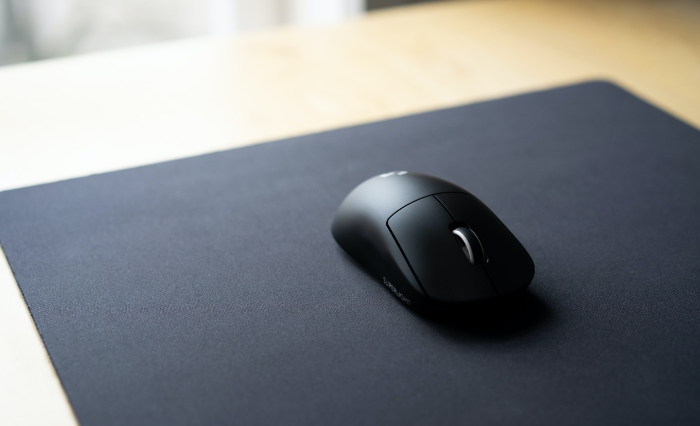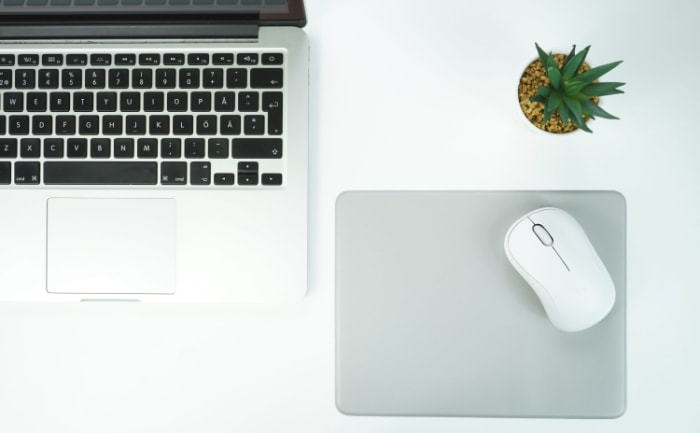A Guide to Alternative Mousepads: No Mousepad, No Problem

In a world that's rapidly becoming more digital, the humble mousepad might seem like an unimportant accessory to some. However, any seasoned computer user knows the value of this simple tool. A mousepad is a surface for placing and moving a computer mouse.
Unfortunately, there may be times when you find yourself without this essential accessory – perhaps you're traveling, in a meeting away from your usual workspace, or your regular mousepad has worn out.
What can you do in such situations? Thankfully, there's no need to rush to the nearest computer store. There are plenty of everyday items that you can use as a viable mousepad alternative.
The Need for a Mousepad Substitute
Life is full of surprises, and not all of them are pleasant. Imagine being on a business trip or working in a remote location when you realize you've forgotten your mousepad. Or perhaps your trusty mousepad finally gives up the ghost right when you're in the middle of an important project.
In these unexpected situations, having a handy list of mousepad substitutes can save the day. Knowing what can serve as a viable alternative can help maintain your productivity levels without missing a beat.
Limitations of Traditional Mousepads
Traditional mousepads, while helpful, come with their own set of limitations. They can wear out over time, with the surface becoming rough or the rubber base peeling off. This can cause inconsistent mouse movements, disrupting your work or gaming experience.
Furthermore, mousepads vary in quality. A high-quality mousepad can be pricey, while a cheaper one might not offer the performance or longevity you need.
Also, conventional mousepads might not suit the aesthetic of your workspace or may not be the right size for your needs, too small for extensive mouse movements or too large for compact workstations.
Exploring Sustainable and Low-Cost Alternatives
In our ever-evolving, environmentally conscious world, sustainability is key. Traditional mousepads are often made of synthetic materials that aren't biodegradable.
By exploring alternatives, you might find more environmentally friendly options, or repurpose items you already have, reducing waste. Moreover, some of these alternatives can be quite cost-effective, especially if you're on a budget or looking for a temporary fix.
Considerations When Choosing an Alternative Mousepad
While the prospect of using an alternative to a traditional mousepad might sound simple, there are several factors to keep in mind. The texture, size, shape, portability, and sustainability of your substitute can significantly impact your user experience.
Surface Texture
The texture of the surface plays a significant role in the performance of the mouse. An overly smooth surface might cause the mouse to slide too easily, leading to imprecise movements.
Conversely, a surface that's too rough could impede the mouse's glide and potentially damage the mouse's feet over time. When choosing an alternative mousepad, you'll want a surface that strikes a balance between these two extremes.
Size and Shape
The ideal mousepad should offer enough space for your mouse to move freely. This is especially important for tasks that require large or rapid mouse movements, such as graphic design or gaming.
Additionally, the shape of your makeshift mousepad should fit well with your workspace. Some desks may better accommodate a round or square mousepad, while others might require a more rectangular shape.
Portability and Convenience
If you're often on the go, portability is a significant factor to consider. Lightweight and flexible materials like fabric or paper can easily be packed into a laptop bag without adding much bulk.
On the other hand, if you're looking for a permanent mousepad alternative for your home office, convenience may be a higher priority. For example, a larger, heavier item that stays put on your desk might be more suitable.
Durability and Sustainability
Last but not least, consider the durability and sustainability of your alternative mousepad. If you're looking for a temporary solution, durability might not be a major concern.
However, if you're seeking a long-term replacement, you'll want a material that can withstand wear and tear. Similarly, if environmental impact is a concern for you, consider options made from renewable or recycled materials.
Considering these factors will not only help you choose an effective mousepad substitute, but also ensure that it aligns with your specific needs and values.
Different Types of Alternative Mousepads

Exploring unconventional solutions often leads to creative and efficient outcomes. When it comes to mousepads, there are plenty of materials in our daily lives that can serve as excellent alternatives.
Paper-Based Options
Regular Printer Paper
A single sheet of printer paper can serve as a basic, temporary mousepad. It provides a smooth, consistent surface for your mouse to glide on. However, it's lightweight and can easily slide around, so it's best used in situations where other options are unavailable.
Notebook or Magazine Cover
The cover of a notebook or magazine is typically sturdier than a regular piece of paper. It can offer better stability and still provide a smooth surface for mouse movement. The glossy covers of some magazines can work particularly well.
Cardboard
A piece of cardboard offers even greater stability than a notebook or magazine cover. It can also be cut to the size that suits your needs. Despite being slightly rougher than other paper-based options, it can serve as a reliable mousepad substitute.
Fabric-Based Options
Tablecloth or Placemat
A tablecloth or placemat, particularly those with a smooth, even texture, can serve as a large, flexible mousepad. They are typically heavy enough to stay in place and offer ample space for mouse movement.
T-shirt or Handkerchief
A clean, flat T-shirt or handkerchief can also work as a makeshift mousepad. The fabric provides a soft, comfortable surface for your hand and wrist. However, ensure the material isn't too textured or fluffy, as this could affect the mouse's performance.
Microfiber Cloth
Microfiber cloth, commonly used for cleaning glasses or electronic screens, provides a surface that helps with precise mouse movement. The material is soft and typically has a fine texture that facilitates smooth mouse glide.
Plastic and Vinyl-Based Options
Desk Mat or Placemat
Plastic or vinyl desk mats or placemats can serve as excellent mousepads. They usually have a smooth surface that allows for accurate mouse tracking, and their weight helps keep them in place.
Document Holder or Binder Cover
The plastic cover of a document holder or binder can also be used as a mousepad substitute. They are typically firm and provide a stable base for your mouse.
Vinyl Record Sleeve
An old vinyl record sleeve can make for a quirky and effective mousepad. Its glossy surface allows for a smooth mouse movement, and its size is generally adequate for most users.
DIY Custom-Made Mousepads
Using Old Calendar or Poster
An old calendar or poster can be repurposed into a custom mousepad. Simply cut it to your preferred size and shape, and you have a unique, personalized mousepad.
Crafting from Cork or Foam Board
Cork or foam boards offer a soft, comfortable surface and can be easily cut to any size or shape. You can also personalize them with paint or markers for a touch of creativity.
Creating from a Piece of Carpet or Rug
A clean, flat piece of carpet or rug can be cut and used as a mousepad. It's ideal for those looking for a soft, cushion-like surface. However, make sure it's not too fluffy or uneven, as it could disrupt mouse tracking.
Each of these alternative mousepad categories offers unique benefits, and they can be particularly helpful when a standard mousepad isn't available or suitable.
Conclusion
Whether due to necessity or the desire for a personalized workspace, exploring alternative options to a traditional mousepad can be a rewarding journey. From paper-based and fabric-based solutions to plastic or vinyl items and even DIY custom-made mousepads, the possibilities are diverse.
Each option carries its own set of benefits and challenges, and what works best will largely depend on individual circumstances and preferences.
Remember, the perfect mousepad substitute doesn't need to be expensive or complex. It could be something as simple as a sheet of printer paper, a clean piece of cloth, or even a repurposed old calendar.
The important aspect is that it serves the purpose of improving your mouse's tracking, offering adequate space for movement, and providing a comfortable surface for your hand and wrist.
This guide was intended to broaden your understanding of the many options available, and hopefully, it has sparked your creativity and resourcefulness. The next time you find yourself without a traditional mousepad, don't fret.
Just look around, and you might find an alternative that could even outperform the original. So, embrace the unconventional, experiment with different materials, and you might just stumble upon a mousepad substitute that perfectly fits your needs and style.


